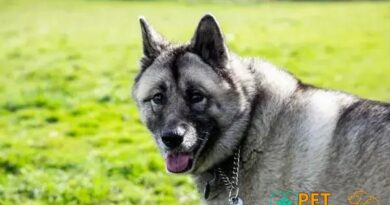What is: Brachycephalic syndrome in dogs
What is Brachycephalic Syndrome in Dogs?
Brachycephalic syndrome in dogs refers to a collection of respiratory issues that affect breeds with short noses and flat faces, such as Bulldogs, Pugs, and Boxers. These anatomical features lead to various health complications, primarily because the structure of their airways is altered. The condition can cause significant breathing difficulties, especially during exercise or in hot weather, making it crucial for dog owners to understand the implications of this syndrome.
Causes of Brachycephalic Syndrome
The primary cause of brachycephalic syndrome is the selective breeding of dogs for specific physical traits, particularly a shortened skull and flat face. This breeding practice has resulted in a range of anatomical abnormalities, including elongated soft palates, narrowed nostrils, and hypoplastic tracheas. These factors contribute to the obstruction of airflow, leading to the respiratory distress commonly seen in affected breeds.
Symptoms of Brachycephalic Syndrome
Dogs suffering from brachycephalic syndrome often exhibit a variety of symptoms that can range from mild to severe. Common signs include noisy breathing, snoring, gagging, and difficulty in exercising. In more severe cases, dogs may experience cyanosis (a bluish tint to the tongue and gums), excessive panting, and even fainting spells. Recognizing these symptoms early can help in managing the condition effectively.
Diagnosis of Brachycephalic Syndrome
Diagnosing brachycephalic syndrome typically involves a thorough physical examination by a veterinarian. The vet will assess the dog’s breathing patterns, listen for abnormal sounds, and may perform diagnostic imaging, such as X-rays, to evaluate the structure of the airways. In some cases, a rhinoscopy or bronchoscopy may be recommended to get a closer look at the nasal passages and throat.
Treatment Options for Brachycephalic Syndrome
Treatment for brachycephalic syndrome varies depending on the severity of the condition. Mild cases may only require lifestyle adjustments, such as avoiding strenuous exercise and keeping the dog cool. For more severe cases, surgical intervention may be necessary to correct anatomical abnormalities. Procedures can include shortening the soft palate, widening the nostrils, or even reconstructing the trachea to improve airflow.
Preventive Measures for Brachycephalic Dogs
Preventing brachycephalic syndrome primarily involves responsible breeding practices. Potential dog owners should research breeds and choose reputable breeders who prioritize health over appearance. Additionally, providing a healthy lifestyle, including regular exercise and a balanced diet, can help mitigate some of the risks associated with this syndrome.
Living with a Brachycephalic Dog
Owning a brachycephalic dog requires special considerations to ensure their well-being. Owners should be vigilant about their dog’s breathing, especially during hot weather or strenuous activities. Providing a cool, comfortable environment and monitoring for signs of respiratory distress are essential. Regular veterinary check-ups can also help manage the condition and address any emerging health issues.
Common Breeds Affected by Brachycephalic Syndrome
Several dog breeds are particularly prone to brachycephalic syndrome due to their physical characteristics. Breeds such as the French Bulldog, Cavalier King Charles Spaniel, and Shih Tzu are commonly affected. Understanding the risks associated with these breeds can help potential owners make informed decisions and prepare for the unique challenges of caring for a brachycephalic dog.
Prognosis for Dogs with Brachycephalic Syndrome
The prognosis for dogs diagnosed with brachycephalic syndrome largely depends on the severity of the condition and the interventions undertaken. Many dogs can lead happy, active lives with proper management and treatment. However, some may experience chronic respiratory issues that require ongoing care. Early diagnosis and proactive management are key to improving the quality of life for these dogs.



